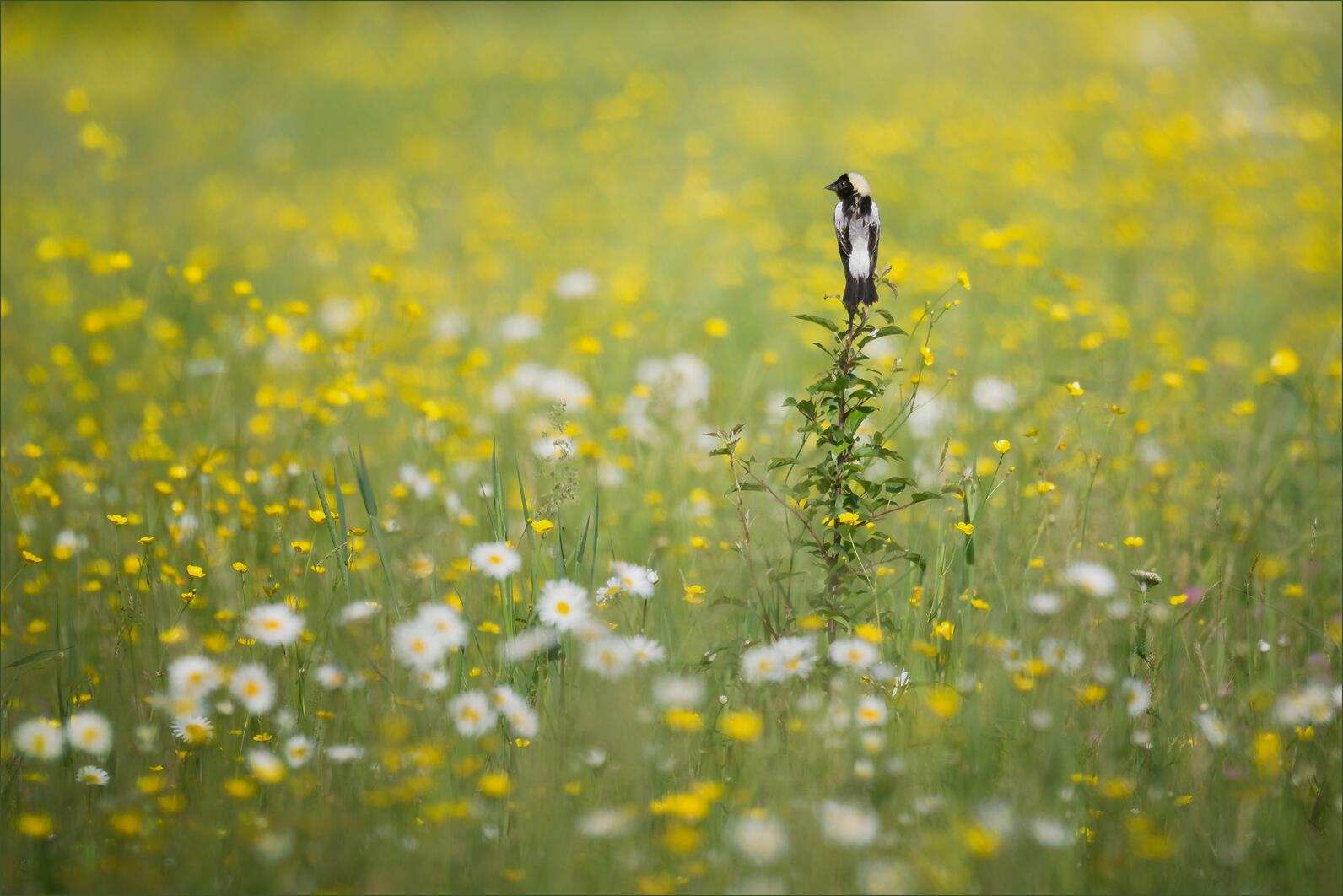Different grassland birds prefer varying habitat characteristics of grass height, cover density, and minimum territory area. While some birds prefer tall grasses, others tend to like shorter grass with sparse cover or shrubby areas that may form along hayfield edges. This diversity means that not all grassland species are likely to occur on any one farm, however, there are some general concepts to be familiar with when encouraging grassland birds.
Are You Meeting the 5 Main Elements for an Ideal Habitat?
- Habitat Size
- Fields are at least 10 acres, 25 acres or larger are better
- Field Shape
- Square, rectangular, or circular, providing high interior area with a low edge effect
- Vegetation Composition and Structure
- At least 50-75% grass cover, grass height at least 12 inches, and few to no woody plants
- Surrounding Area
- Field is surrounded by other similar open fields and not isolated
- Reduced Disturbance During Breeding Season
- May through July is a critical window for multiple species to nest and raise chicks
Pasture and Hayfield Management Options to Consider for Grassland Birds
Benefits of Bird-friendly Rotational Grazing Strategies
- Increased forage grass quality and productivity
- Lower cost of feed, fuel, fertilizer and pesticides
- Improvement of soil health and structure
- Natural pest control
- Enhanced habitat for bees and butterflies that offer crop pollination services
Mowing Timing and Frequency Methods
Most grassland birds will begin establishing territory in May and nest and hatch eggs in June. In July, young will prepare to fledge and generally will have fledged by August. To avoid the disruption of this process, it is best to mow a field no later than mid May, then wait a 65-day rest period before mowing again to give them time to try again or delay mowing altogether until early August. Mowing patterns from one field edge to another in a zig-zag or from inside-out better allow birds to escape machinery than mowing from the outside in.
Why Consider Bird-Friendly Management Practices?
Grassland birds are losing crucial habitat and their populations are in steep decline. The intensification of agricultural practices and reforestation of previous grasslands has left many birds without a place to nest. Bird-friendly farmland management for grassland birds not only maintains this much needed habitat, but can also provide a variety of additional benefits to farms. Hosting various groups of birds on your farm can act as a natural pest control, reducing insects like caterpillars, weevils, cutworms, beetles, and flies that can negatively impact crop yields and the health and welfare of livestock animals.
Which Grassland Birds Will Benefit?
- Eastern Meadowlark, Grasshopper Sparrow, Bobolink, Savannah Sparrow, American Kestrel, Northern Harrier, Tree and Barn Swallows, Eastern Bluebird
Additional Resources for Wildlife-Friendly Pasture and Hay Management and Payment Incentives:
Grassland and Field Habitat Management, Vermont Fish and Wildlife
State of Vermont Farm Agronomic Practices Program




